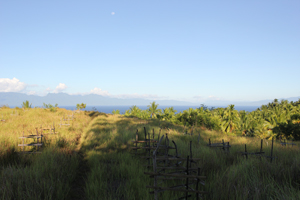With a total of 7 107 islands, and stretching over 1 800 km from north to south, the Philippines is the world’s second largest archipelago country after Indonesia. It is also one of the world’s megadiverse countries, meaning that its biodiversity is nearly unparalleled and it is, in fact, its own biodiversity hotspot. Its terrestrial ecosystems have more than 52 000 described species, with fully half being endemic, and due to its location at the apex of the Coral Triangle, it is the global epicenter of marine biodiversity, with the world’s highest concentration of species per unit area and number of range-restricted endemics.
Unfortunately, this unmatched biodiversity is very threatened, mainly by the destructive use of resources, development activities and human population pressure (the Philippines has one of the world’s youngest and fastest-growing populations). On land, the main problem is the country’s exceptional rate of deforestation, among the highest anywhere. The marine realm is threatened by many of the same factors (e.g., overfishing and destructive fishing, global warming, land reclamation, pollution, poor coastal management) that affect marine life worldwide, all compounded by deforestation and rampant governmental corruption, much like what is happening in many countries in our little corner of the world.

Rainforestation plot recently planted by the municipality of Pilar on the island of Ponson, in the Camotes.
The Philippines exemplifies everything about environmental challenges in Southeast Asia that the BES programme wants to teach our students, and presents the best possible opportunity to study the three core themes of this course. In addition, there is a huge number and diversity of conservation efforts, many at the grassroots level, with varying levels of effectiveness, so that our students can see for themselves what ordinary citizens can accomplish and assess the factors that determine whether conservation goals are met or not. Our decision to hold the ENV 3102 class in the Philippines was largely based on this, but it certainly doesn’t hurt that English is widely spoken, that Filipinos are (in my opinion at least) the warmest, friendliest and funniest people in Southeast Asia and that this country, particularly the region we are visiting, is absolutely gorgeous. The Department of Tourism’s slogan is “it’s more fun in the Philippines”. I have to say that it really is.